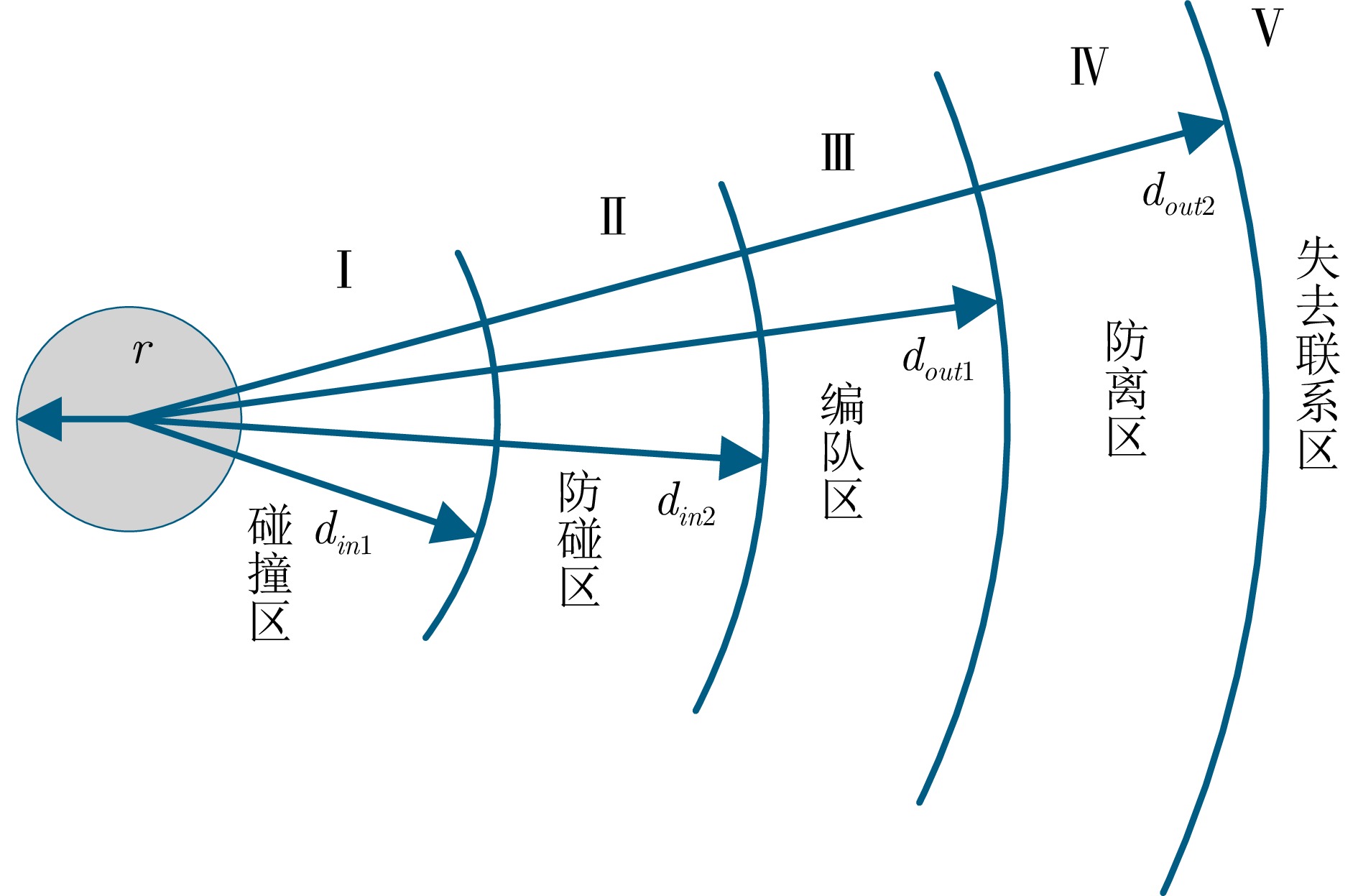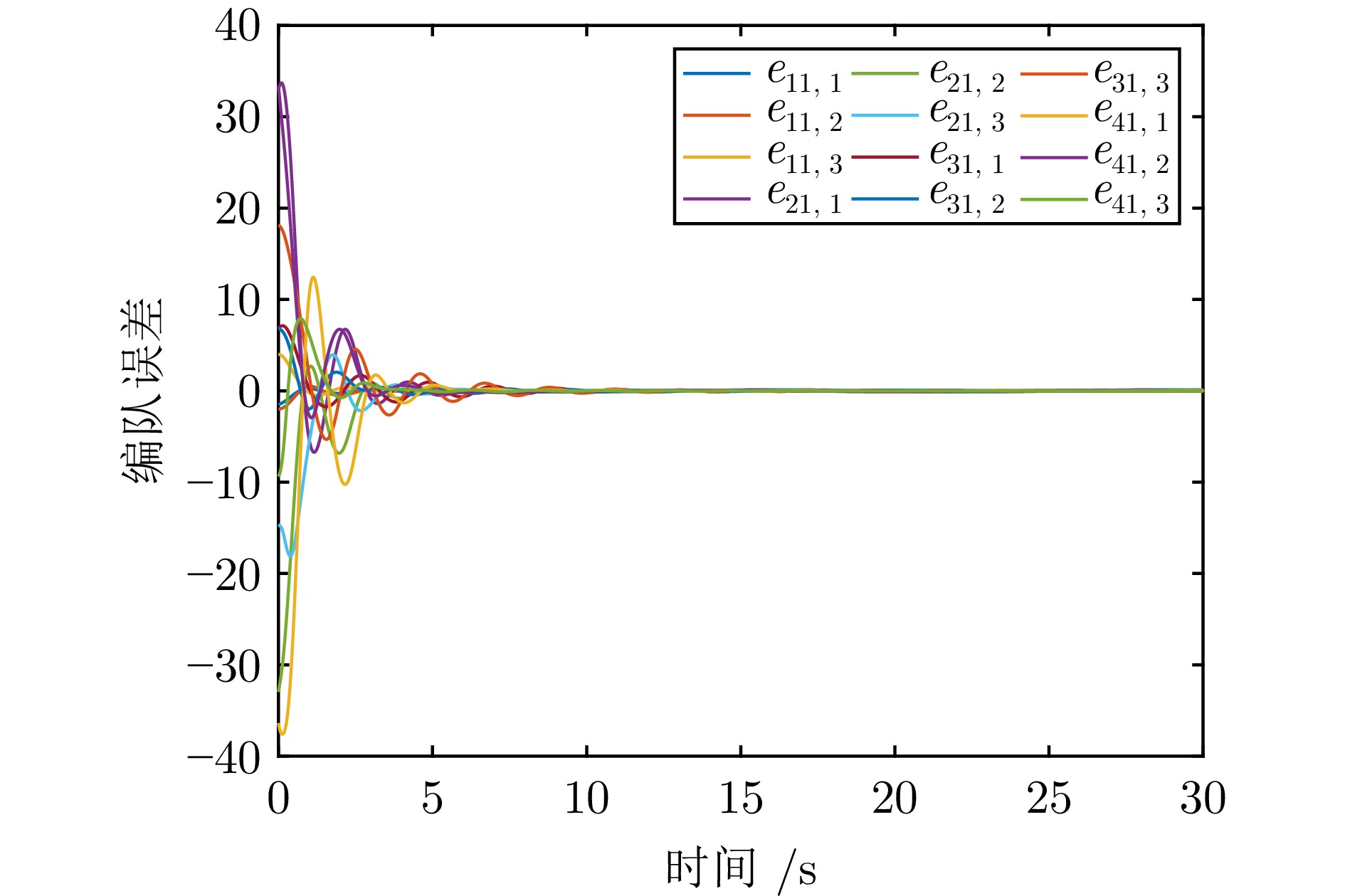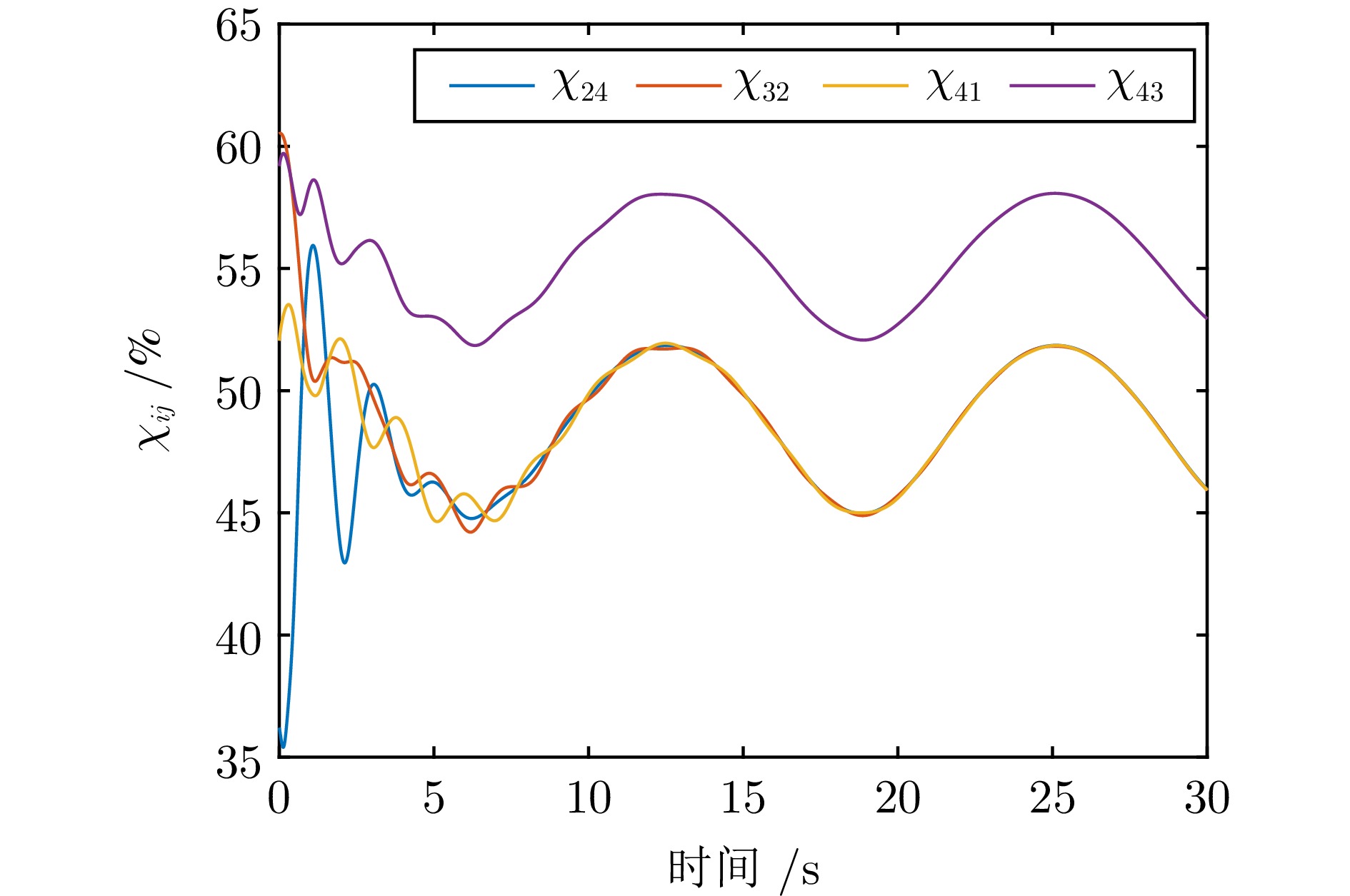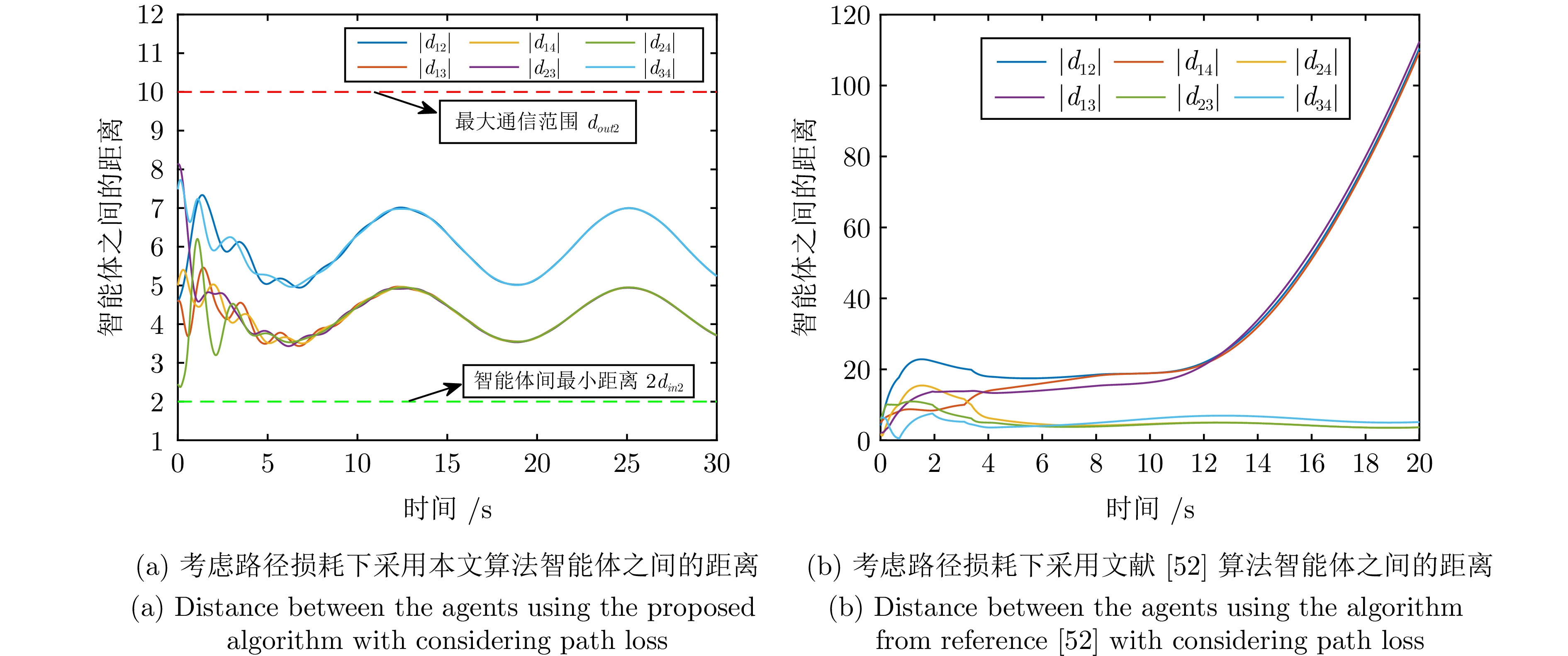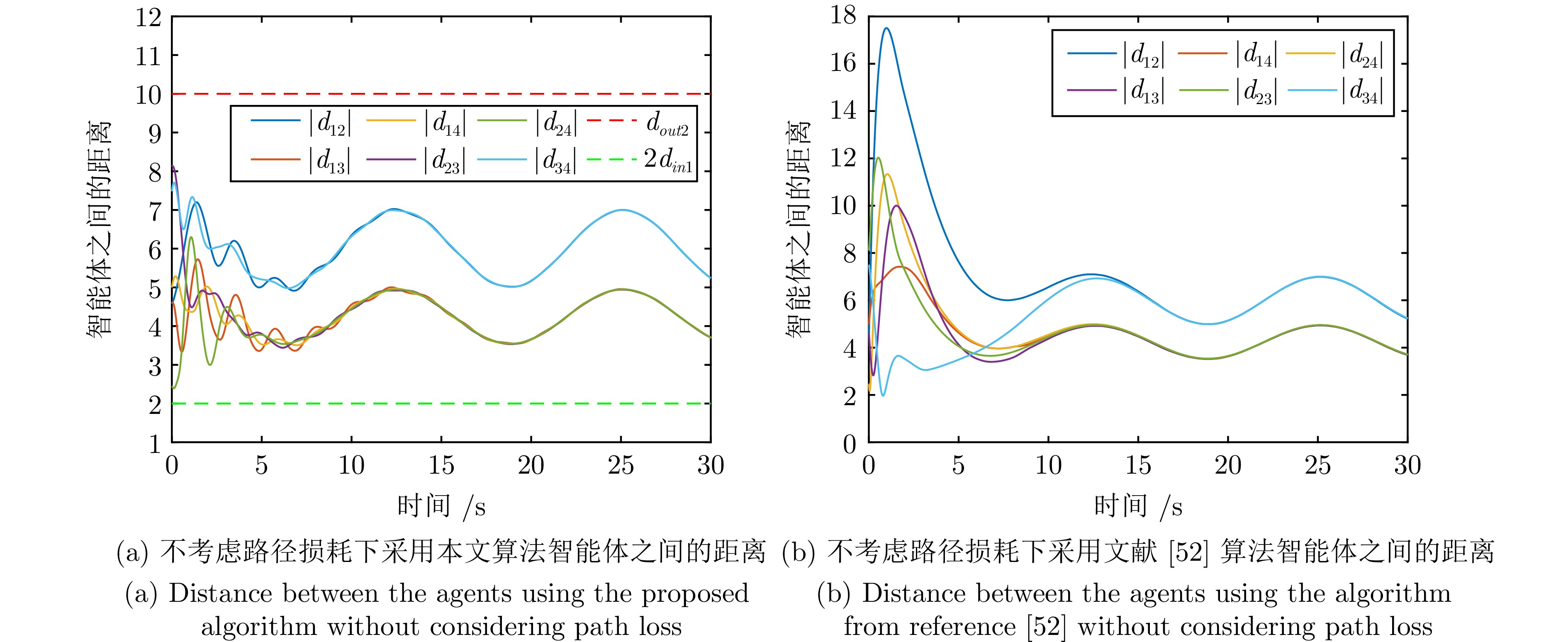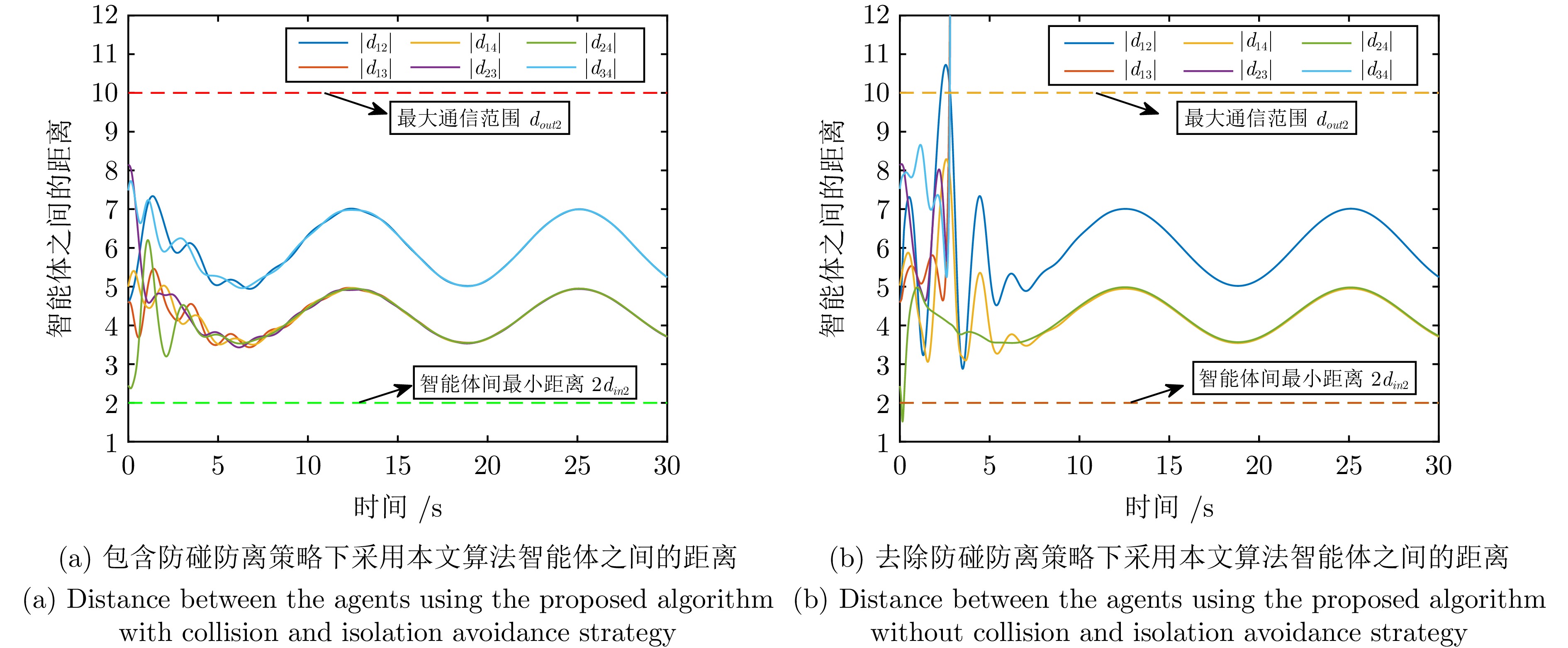|
[1]
|
Liu Y X, Wu X K, Long J, Wang W. Event-triggered distributed adaptive leaderless consensus of uncertain heterogenous nonlinear multi-agent systems. IEEE Transactions on Circuits and Systems II: Express Briefs, 2024, 71(5): 2694−2698
|
|
[2]
|
Niu B, Gao Y H, Zhang G J, Zhao X D, Wang H Q, Wang D, et al. Adaptive prescribed-time consensus tracking control scheme of nonlinear multi-agent systems under deception attacks. IEEE Transactions on Automation Science and Engineering, DOI: 10.1109/TASE.2024.3408453
|
|
[3]
|
Che W W, Zhang L L, Deng C, Wu Z G. Cooperative tracking control for nonlinear MASs under event-triggered communication. IEEE Transactions on Cybernetics, 2024, 54(3): 1947−1959 doi: 10.1109/TCYB.2023.3303138
|
|
[4]
|
Deng Z H, Luo J. Fully distributed algorithms for constrained nonsmooth optimization problems of general linear multiagent systems and their application. IEEE Transactions on Automatic Control, 2024, 69(2): 1377−1384 doi: 10.1109/TAC.2023.3301957
|
|
[5]
|
Zhang T Y, Ye D, Yang G H. Ripple effect of cooperative attacks in multi-agent systems: Results on minimum attack targets. Automatica, 2024, 159: Article No. 111307 doi: 10.1016/j.automatica.2023.111307
|
|
[6]
|
Zhang W T, Zuo Z Q, Wang Y J. Networked multiagent systems: Antagonistic interaction, constraint, and its application. IEEE Transactions on Neural Networks and Learning Systems, 2022, 33(8): 3690−3699 doi: 10.1109/TNNLS.2021.3054128
|
|
[7]
|
Wang W C, Liu Y M, Srikant R, Ying L. 3M-RL: Multi-resolution, multi-agent, mean-field reinforcement learning for autonomous UAV routing. IEEE Transactions on Intelligent Transportation Systems, 2022, 23(7): 8985−8996 doi: 10.1109/TITS.2021.3089120
|
|
[8]
|
Zhao M Z, Li H P. Distributed model predictive contouring control of unmanned surface vessels. IEEE Transactions on Industrial Electronics, 2024, 71(10): 13012−13019 doi: 10.1109/TIE.2024.3363751
|
|
[9]
|
Han Z, Wang W, Ran M P, Wen C Y, Wang L. Switching-based distributed adaptive secure formation control for mobile robots with denial-of-service attacks. IEEE Transactions on Systems, Man, and Cybernetics: Systems, 2024, 54(7): 4126−4138 doi: 10.1109/TSMC.2024.3375353
|
|
[10]
|
Ahmed B, Lounis A, Philippe M. Stable navigation in formation for a multi-robot system based on a constrained virtual structure. Robotics and Autonomous Systems, 2022, 62(12): 1806−1815
|
|
[11]
|
Liu Z Q, Ge X H, Xie H, Han Q L, Zheng J C, Wang Y L. Secure leader-follower formation control of networked mobile robots under replay attacks. IEEE Transactions on Industrial Informatics, 2024, 20(3): 4149−4159 doi: 10.1109/TII.2023.3313651
|
|
[12]
|
Loría A, Nuño E, Panteley E. Observerless output-feedback consensus-based formation control of second-order nonholonomic systems. IEEE Transactions on Automatic Control, 2022, 67(12): 6934−6939 doi: 10.1109/TAC.2021.3136140
|
|
[13]
|
Yu J L, Dong X W, Li Q D, Lü J H, Ren Z. Adaptive practical optimal time-varying formation tracking control for disturbed high-order multi-agent systems. IEEE Transactions on Circuits and Systems I: Regular Papers, 2022, 69(6): 2567−2578 doi: 10.1109/TCSI.2022.3151464
|
|
[14]
|
Ma C, Dong D B. Finite-time prescribed performance time-varying formation control for second-order multi-agent systems with non-strict feedback based on a neural network observer. IEEE/CAA Journal of Automatica Sinica, 2024, 11(4): 1039−1050 doi: 10.1109/JAS.2023.123615
|
|
[15]
|
Zhao G L, Hua C C. A hybrid systems approach to event-triggered consensus of multiagent systems with packet losses. IEEE Transactions on Systems, Man, and Cybernetics: Systems, 2023, 53(3): 1773−1787 doi: 10.1109/TSMC.2022.3205056
|
|
[16]
|
Pan Z H, Sun Z Q, Deng H B, Li D F. A multilayer graph for multiagent formation and trajectory tracking control based on MPC algorithm. IEEE Transactions on Cybernetics, 2022, 52(12): 13586−13597 doi: 10.1109/TCYB.2021.3119330
|
|
[17]
|
Shi C X, Yang G H, Li X J. Data-based fault-tolerant consensus control for uncertain multiagent systems via weighted edge dynamics. IEEE Transactions on Systems, Man, and Cybernetics: Systems, 2019, 49(12): 2548−2558 doi: 10.1109/TSMC.2017.2743261
|
|
[18]
|
孙梦薇, 任璐, 刘剑, 孙长银. 切换拓扑下动态事件触发多智能体系统固定时间一致性. 自动化学报, 2023, 49(6): 1295−1305Sun Meng-Wei, Ren Lu, Liu Jian, Sun Chang-Yin. Dynamic event-triggered fixed-time consensus control of multi-agent systems under switching topologies. Acta Automatica Sinica, 2023, 49(6): 1295−1305
|
|
[19]
|
Chen L Y, Wen G H, Liu H Z, Yu W W, Cao J D. Compressed gradient tracking algorithm for distributed aggregative optimization. IEEE Transactions on Automatic Control, 2024, 69(10): 6576−6591 doi: 10.1109/TAC.2024.3371876
|
|
[20]
|
Li J X, Yi P, Duan T, Zhang Z, Hu T. Hierarchical DDPG based reinforcement learning framework for multi-agent collective motion with short communication ranges. IEEE Transactions on Machine Learning in Communications and Networking, 2024, 2: 633−644 doi: 10.1109/TMLCN.2024.3400059
|
|
[21]
|
Chen C, Xie K, Lewis F L, Xie S L, Fierro R. Adaptive synchronization of multi-agent systems with resilience to communication link faults. Automatica, 2020, 111: Article No. 108636 doi: 10.1016/j.automatica.2019.108636
|
|
[22]
|
An L W, Yang G H, Deng C, Wen C Y. Event-triggered reference governors for collisions-free leader-following coordination under unreliable communication topologies. IEEE Transactions on Automatic Control, 2024, 69(4): 2116−2130 doi: 10.1109/TAC.2023.3291654
|
|
[23]
|
Hu G Z, Zhu Y H, Zhao D B, Zhao M C, Hao J Y. Event-triggered communication network with limited-bandwidth constraint for multi-agent reinforcement learning. IEEE Transactions on Neural Networks and Learning Systems, 2023, 34(8): 3966−3978 doi: 10.1109/TNNLS.2021.3121546
|
|
[24]
|
范泉涌, 张乃宗, 唐勇, 许斌. 基于动态事件触发通信协议的多智能体系统自适应可靠控制. 自动化学报, 2024, 50(5): 924−936Fan Quan-Yong, Zhang Nai-Zong, Tang Yong, Xu Bin. Adaptive reliable control of multi-agent systems based on dynamic event-triggered communication protocol. Acta Automatica Sinica, 2024, 50(5): 924−936
|
|
[25]
|
Chen Y L, Ai B, Niu Y, Guan K, Han Z. Resource allocation for device-to-device communications underlaying heterogeneous cellular networks using coalitional games. IEEE Transactions on Wireless Communications, 2018, 17(6): 4163−4176 doi: 10.1109/TWC.2018.2821151
|
|
[26]
|
Fang X, Ramzan M, Wang Q, Neumann N, Du X F, Plettemeier D. Path loss models for wireless cardiac RF communication. IEEE Antennas and Wireless Propagation Letters, 2021, 20(6): 893−897 doi: 10.1109/LAWP.2021.3066546
|
|
[27]
|
Juang R T. Deep learning-based path loss model in urban environments using image-to-image translation. IEEE Transactions on Antennas and Propagation, 2022, 70(12): 12081−12091 doi: 10.1109/TAP.2022.3209229
|
|
[28]
|
Kryszkiewicz P, Sroka P, Sybis M, Kliks A. Path loss and shadowing modeling for vehicle-to-vehicle communications in terrestrial TV band. IEEE Transactions on Antennas and Propagation, 2023, 71(1): 984−998 doi: 10.1109/TAP.2022.3216472
|
|
[29]
|
Shi Q, Li T S, Li J Q, Chen C L P, Xiao Y, Shan Q H. Adaptive leader-following formation control with collision avoidance for a class of second-order nonlinear multi-agent systems. Neurocomputing, 2019, 350: 282−290 doi: 10.1016/j.neucom.2019.03.045
|
|
[30]
|
Wang X F, Ye D. Finite-time output-feedback formation control for high-order nonlinear multiagent systems with obstacle avoidance. IEEE Transactions on Automation Science and Engineering, 2024, 21(2): 1878−1888 doi: 10.1109/TASE.2023.3244536
|
|
[31]
|
Xiao F, Wang L, Chen T W. Connectivity preservation for multi-agent rendezvous with link failure. Automatica, 2012, 48(1): 25−35 doi: 10.1016/j.automatica.2011.09.027
|
|
[32]
|
Yi J L, Li J, Yang C G. Adaptive fuzzy prescribed-time connectivity-preserving consensus of stochastic nonstrict-feedback switched multiagent systems. IEEE Transactions on Fuzzy Systems, 2023, 31(10): 3346−3357 doi: 10.1109/TFUZZ.2023.3252601
|
|
[33]
|
ElHamamsy A, Aghili F, Aghdam A G. Connectivity preservation and collision avoidance in multi-agent systems using model predictive control. IEEE Transactions on Network Science and Engineering, 2023, 10(3): 1779−1791 doi: 10.1109/TNSE.2023.3234720
|
|
[34]
|
Fang H, Wei Y, Chen J, Xin B. Flocking of second-order multiagent systems with connectivity preservation based on algebraic connectivity estimation. IEEE Transactions on Cybernetics, 2017, 47(4): 1067−1077 doi: 10.1109/TCYB.2016.2537307
|
|
[35]
|
Sung J Y, Bong S P. Connectivity preservation and collision avoidance in networked nonholonomic multi-robot formation systems: Unified error transformation strategy. Automatica, 2019, 103: 274−281 doi: 10.1016/j.automatica.2019.02.019
|
|
[36]
|
Dong S J, Li Y M. Adaptive fuzzy event-triggered formation control for nonholonomic multirobot systems with infinite actuator faults and range constraints. IEEE Internet of Things Journal, 2024, 11(1): 1361−1373 doi: 10.1109/JIOT.2023.3289221
|
|
[37]
|
Dong G W, Li H Y, Ma H, Lu R Q. Finite-time formation control of under-actuated ships using nonlinear sliding mode control. IEEE Transactions on Neural Networks and Learning Systems, 2021, 32(2): 653−662 doi: 10.1109/TNNLS.2020.2978898
|
|
[38]
|
Yang J, Zhong Q S, Wang Y, Shi K B, Zhong S M. Networked multiagent systems: Nonfragile memory-based PD-like sampled-data consensus control for nonlinear multiagent systems with time-varying communication delays. IEEE Transactions on Systems, Man, and Cybernetics: Systems, 2023, 53(7): 4370−4380 doi: 10.1109/TSMC.2023.3247443
|
|
[39]
|
王端松, 李东禹, 梁晓玲. 干扰条件下无人艇编队有限时间同步控制. 自动化学报, 2024, 50(5): 1047−1058Wang Duan-Song, Li Dong-Yu, Liang Xiao-Ling. Finite time synchronized formation control of unmanned surface vehicles with external disturbances. Acta Automatica Sinica, 2024, 50(5): 1047−1058
|
|
[40]
|
高振宇, 孙振超, 郭戈. 考虑执行器非线性的固定时间全局预设性能车辆队列控制. 自动化学报, 2024, 50(2): 320−333Gao Zhen-Yu, Sun Zhen-Chao, Guo Ge. Fixed-time global prescribed performance control for vehicular platoons with actuator nonlinearities. Acta Automatica Sinica, 2024, 50(2): 320−333
|
|
[41]
|
Liu Y, Li H Y, Lu R Q, Zuo Z Y, Li X D. An overview of finite/fixed-time control and its application in engineering systems. IEEE/CAA Journal of Automatica Sinica, 2022, 9(12): 2106−2120 doi: 10.1109/JAS.2022.105413
|
|
[42]
|
Li Y L, Niu B, Zong G D, Zhao J F, Zhao X D. Command filter-based adaptive neural finite-time control for stochastic nonlinear systems with time-varying full-state constraints and asymmetric input saturation. International Journal of Systems Science, 2021, 53(1): 199−221
|
|
[43]
|
Zhang H Y, Wang H Q, Niu B, Zhang L, Adil M A. Sliding-mode surface-based adaptive actor-critic optimal control for switched nonlinear systems with average dwell time. Information Sciences, 2021, 580: 756−774 doi: 10.1016/j.ins.2021.08.062
|
|
[44]
|
Zuo Z Y, Tang J C, Ke R Q, Han Q L. Hyperbolic tangent function-based protocols for global/semi-global finite-time consensus of multi-agent systems. IEEE/CAA Journal of Automatica Sinica, 2024, 11(6): 1381−1397 doi: 10.1109/JAS.2024.124485
|
|
[45]
|
Nie R, Du W L, Li Z M, He S P. Finite-time consensus control for MASs under hidden Markov model mechanism. IEEE Transactions on Automatic Control, 2024, 69(7): 4726−4733 doi: 10.1109/TAC.2024.3351947
|
|
[46]
|
Zhou J L, Lv Y Z, Wen G H, Yu X H. Resilient consensus of multiagent systems under malicious attacks: Appointed-time observer-based approach. IEEE Transactions on Cybernetics, 2022, 52(10): 10187−10199 doi: 10.1109/TCYB.2021.3058094
|
|
[47]
|
Pilloni A, Pisano A, Usai E. Semi-global fixed-time state estimation and unknown input reconstruction via first-order sliding mode observers with delay. IEEE Transactions on Automatic Control, 2024, 69(11): 7839−7846 doi: 10.1109/TAC.2024.3401269
|
|
[48]
|
Chen C Y, Han Y Y, Zhu S, Zeng Z G. Distributed fixed-time tracking and containment control for second-order multi-agent systems: A nonsingular sliding-mode control approach. IEEE Transactions on Network Science and Engineering, 2023, 10(2): 687−697 doi: 10.1109/TNSE.2022.3217536
|
|
[49]
|
Zhao X D, Yang H J, Zong G D. Adaptive neural hierarchical sliding mode control of nonstrict-feedback nonlinear systems and an application to electronic circuits. IEEE Transactions on Systems, Man, and Cybernetics: Systems, 2017, 47(7): 1394−1404 doi: 10.1109/TSMC.2016.2613885
|
|
[50]
|
Zhang Y, Zhang Q L, Zhang J Y, Wang Y Y. Sliding mode control for fuzzy singular systems with time delay based on vector integral sliding mode surface. IEEE Transactions on Fuzzy Systems, 2020, 28(4): 768−782 doi: 10.1109/TFUZZ.2019.2916049
|
|
[51]
|
Li Y Y, Li Y X. Resilient distributed fixed-time tracking of heterogeneous UAVs-UGVs systems against DoS attacks. IEEE Transactions on Systems, Man, and Cybernetics: Systems, 2024, 54(9): 5780−5790 doi: 10.1109/TSMC.2024.3408410
|
|
[52]
|
Zheng C B, Pang Z H, Wang J X, Sun J, Liu G P, Han Q L. Null-space-based time-varying formation control of uncertain nonlinear second-order multiagent systems with collision avoidance. IEEE Transactions on Industrial Electronics, 2023, 70(10): 10476−10485 doi: 10.1109/TIE.2022.3217585
|




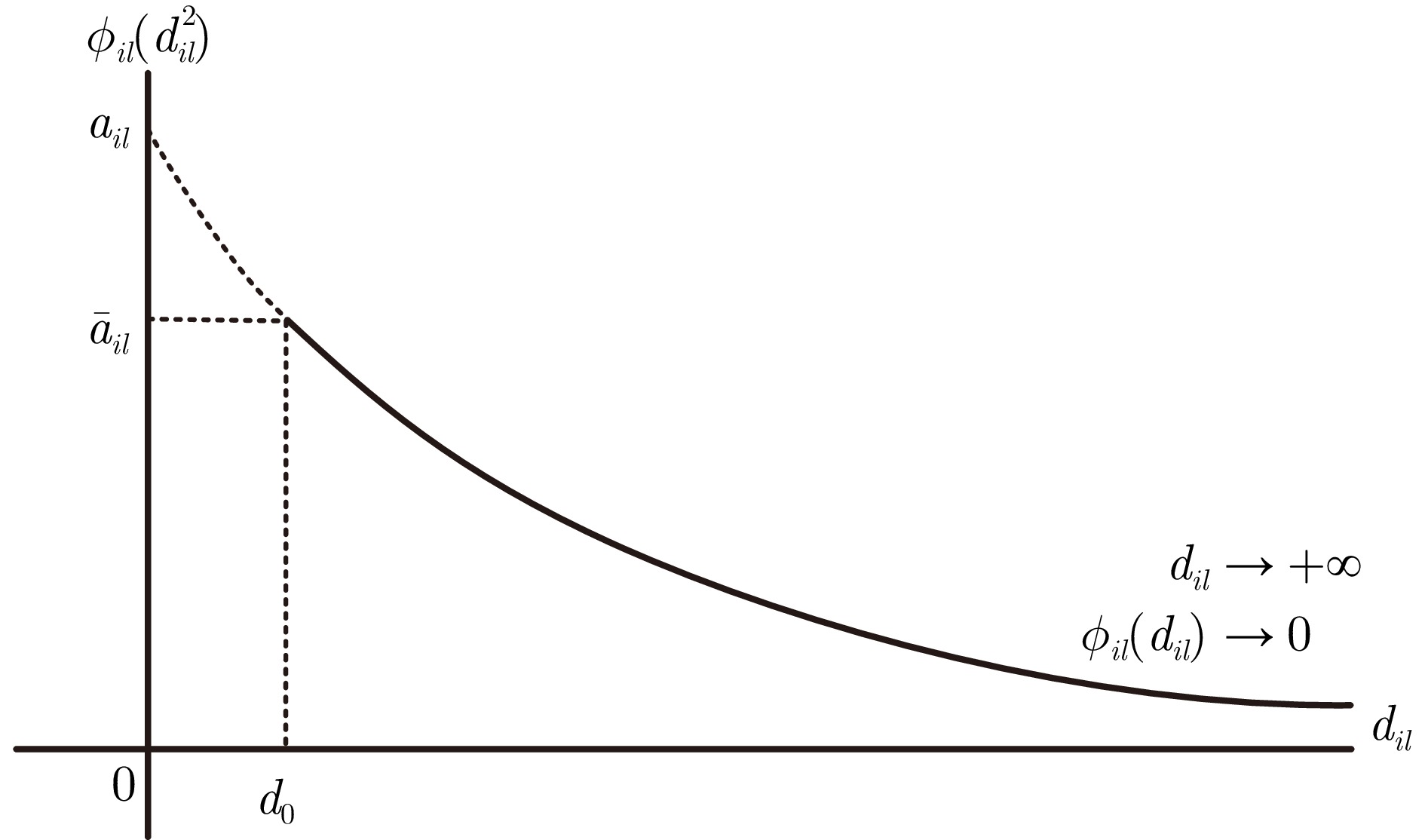
 下载:
下载:
